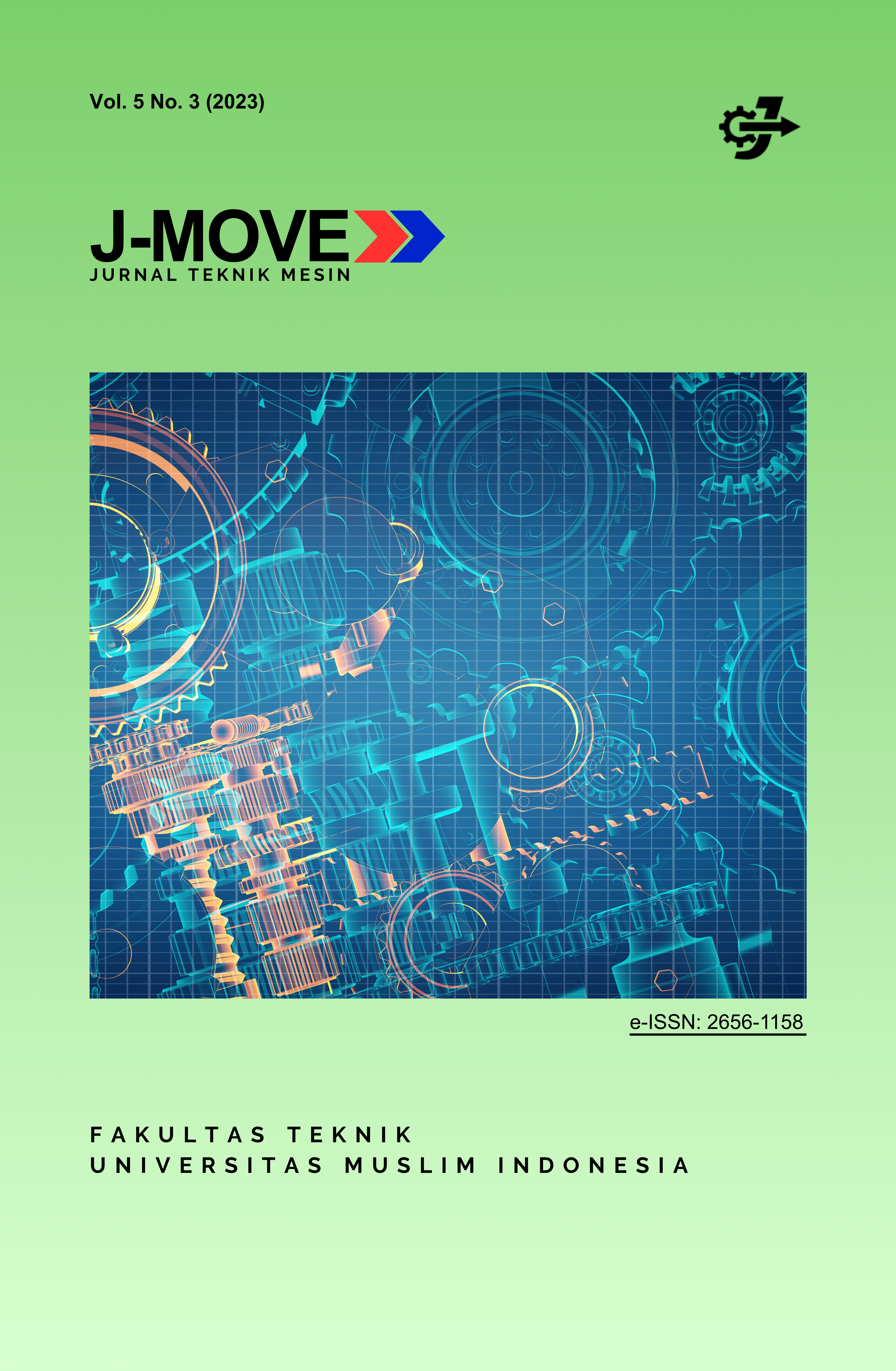Experimental Performance Study of an Orifice Plate at Low Reynolds Numbers
Keywords:
Rasio tebal pelat, bilangan Reynolds, discharge coefficient , permanent pressure lossAbstract
The measurement of volumetric flow rate in pipelines is essential in process industries, particularly those that rely on piping systems for fluid transport. A flow meter is an instrument commonly used to measure volumetric flow rate in a pipe, based on the principle of differential pressure between the upstream and downstream sections. In this study, the performance of an orifice plate was experimentally investigated at a plate thickness ratio (s/d) of 1.66 and a diameter ratio (β) of 0.5. The experiments were carried out within a Reynolds number (Re) range of 3300–16500, to examine its correlation with pressure distribution, discharge coefficient (Cd), and permanent pressure loss as the main parameters.
The results show that the percentage of permanent pressure loss, referenced to the centerline pressure at an orifice thickness ratio (s/d) of 1.66, reached 64.33%. This indicates that as Re increases, the pressure drop of the fluid flow also increases. The average discharge coefficient values obtained were 0.760 (with reference to centerline pressure) and 0.797 (with reference to D;0.5D).
Downloads
Published
Issue
Section
License

This work is licensed under a Creative Commons Attribution-ShareAlike 4.0 International License.
All articles published in J-Move Journal (Journal of Mechanical Engineering Innovation and Development) are licensed under the terms of the Creative Commons Attribution-ShareAlike 4.0 International License (CC BY-SA 4.0).
- Copyright is retained by the authors.
- Articles may be used, copied, shared, and adapted by others for both commercial and non-commercial purposes, provided that:
- Proper attribution is given to the original authors and to the journal as the place of first publication.
- Any derivative works (adaptations, modifications, or developments) must be distributed under the same license (CC BY-SA 4.0).
By submitting their manuscript to this journal, authors agree that their work may be distributed and reused in accordance with this license.








